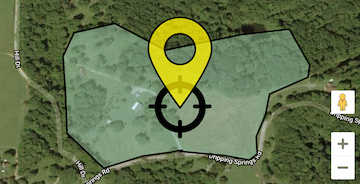Buckwheat-Fagopyrum esculentum

By Kent Kammermeyer, Senior Wildlife Biologist
Origin/DescriptionBuckwheat has been grown in North America since colonial days and the crop was once common on farms in the northeast and north central U.S. Production peaked in 1866 when the grain was a common livestock feed and was in demand for making flour mostly used in pancakes. Buckwheat had a resurgence of popularity in the mid-1970's that was caused by the demand for commercially prepared breakfast cereal and by exports to Japan for making buckwheat noodles.
Buckwheat is an annual that can grow from two to five feet tall. The plant has a single, erect stem and usually has many branches. Leaf blades are two to four inches long and are triangular and heart-shaped. The plant has a shallow taproot and numerous short side roots. The root system can go up to three feet deep.
Adaptation/EstablishmentBuckwheat can be grown virtually anywhere in the U.S. and Canada, except under extremely dry climates. It grows best under cool, moist conditions and can produce mature seed in 10-12 weeks. When planted later in the season, maturity can occur in six to nine weeks. Although best planted after the last frost, the crop can be planted from April until September in the South. Germination is best at 80oFsoil temperature but it will germinate at any temperature between 45o and105oF. Seed yield of early plantings can sometimes be adversely impacted by hot, dry weather when it occurs during bloom.
Buckwheat is tolerant of a wide variety of soil conditions possibly more than any other grain crop. The crop will produce a better crop than any other grain on infertile, poorly tilled soil. However, expect a poor yield on heavy, wet soils. In the Deep South, the crop is often sown on poorly or hastily prepared land or land so rough and stony that good preparation is impossible. Even under these conditions, buckwheat can still produce fair crops. Buckwheat will respond to good seedbed preparation. A weed-free, smooth, well-prepared seedbed should be established before the crop is seeded. If established weeds are controlled with an appropriate burn down chemical program (glyphosate), the crop can be top seeded in stale seedbeds or in crop residues using a no-till drill.
If soil test levels of phosphorus and potassium are medium or better (50 or greater), additional applications of phosphorus and potash will not be needed. In lieu of soil tests, apply 100-300 lbs/acre of 3-12-12 or 5-10-15 or apply about 100-150 lbs/acre of 8-24-24. Buckwheat does not need a lot of nitrogen(N). Nitrogen should be limited to 10 to 20 lbs/acre. Buckwheat tolerates a wide range of soil acidity, however, if pH is below 5.5, lime will be beneficial to raise pH to 6.0 or better. If planted alone, drill at 36 to 50lbs/acre or broadcast at 60 lbs/acre and cover no deeper than two inches. Germination generally occurs in about six days.
Varieties/ManagementIn most cases, seed of unknown or no variety designation will be all that is available. Recognized varieties, if available, include Japanese, Silverhull, Common Gray, Mancan, Manor, Royal, and Tokyo (a smaller seeded variety).Tartary buckwheat (also known as Indianwheat and Duckwheat) is a separate species (F. tataricum) that is smaller and more slender and considered hardier than buckwheat. It is sometimes planted and flooded for ducks.
Buckwheat has an excellent "rotational effect" and crops following buckwheat typically do very well. Root residues make phosphorus more available to the follow-up crop and also return considerable levels of phosphorus to the soil. Buckwheat also makes an excellent "smother crop" because it is a good competitor, germinates rapidly, and the dense leaf canopy soon shades the soil. The rapid growth soon smothers most weeds. Buckwheat is a useful crop for control of quackgrass, thistle, creeping jenny, leafy spurge, Russian knapweed and perennial peppergrass. Because of buckwheat's early competitiveness, it should not be used as a companion crop for establishing legumes. If buckwheat is used in any mixture, seeding rate should be cut to 20 lbs/acre and mixed with tall grain sorghum (five lbs/acre) or corn (10 lbs/acre) or brown top millet (20 lbs/acre). If any of these mixes are used, add an additional 150lbs/acre of ammonium nitrate (34-0-0) fertilizer. If seed are allowed to mature and the stand is mowed, it will reseed and produce another stand.
Deer use of buckwheat leaves and blooms is often heavy. Little use of the mature seed has been reported. However, like Brassicas, it may take deer a year or two to discover and begin using buckwheat plots. Once they do begin use, overgrazing wipeouts may occur in small (less than three acre) fields. My plot last summer sustained only light use. It reseeded once on its own, I mowed the second stand, plowed it under in August and planted a follow-up crop of wheat and Durana white clover. Despite serious drought, this planting has turned into my best clover plot ever. Did buckwheat account for some of this clover success? I think so, because of its "rotational effect" and improvements on soil structure in the root zone.
Buckwheat (Mancan variety) is readily available from Pennington Seed Co. and is also an important component of Rackmaster Deluxe and Rackmaster Supreme spring/summer seed mixtures.





